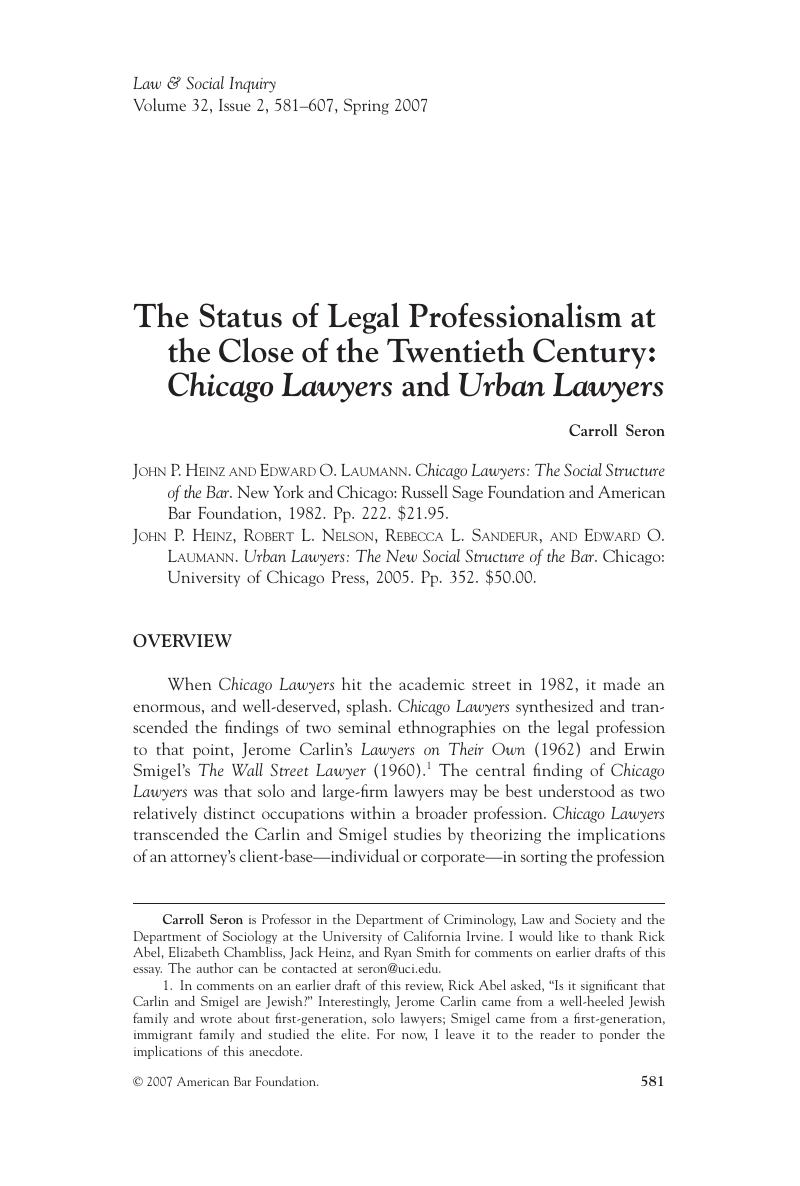Crossref Citations
This article has been cited by the following publications. This list is generated based on data provided by Crossref.
Moorhead, Richard Lewis
2008.
Lawyer Specialisation - Managing the Professional Paradox.
SSRN Electronic Journal,
MOORHEAD, RICHARD
2010.
Lawyer Specialization-Managing the Professional Paradox.
Law & Policy,
Vol. 32,
Issue. 2,
p.
226.
Anleu, Sharyn Roach
and
Mack, Kathy
2013.
Crime, Justice and Social Democracy.
p.
200.
Chris Carter, Professor Crawford Sp, Professor
Ramirez, Carlos
Stringfellow, Lindsay
and
Maclean, Mairi
2015.
Beyond segments in movement: a “small” agenda for research in the professions.
Accounting, Auditing & Accountability Journal,
Vol. 28,
Issue. 8,
p.
1341.
Kluegel, Alan James
2016.
The Firm As a Nexus of Organizational Theories: Sociological Perspectives on the Modern Law Firm.
Annual Review of Law and Social Science,
Vol. 12,
Issue. 1,
p.
459.
Gleeson, Shannon
2021.
Legal Status and Client Satisfaction: The Case of Low-Wage Immigrant Workers.
Law & Social Inquiry,
Vol. 46,
Issue. 2,
p.
364.



